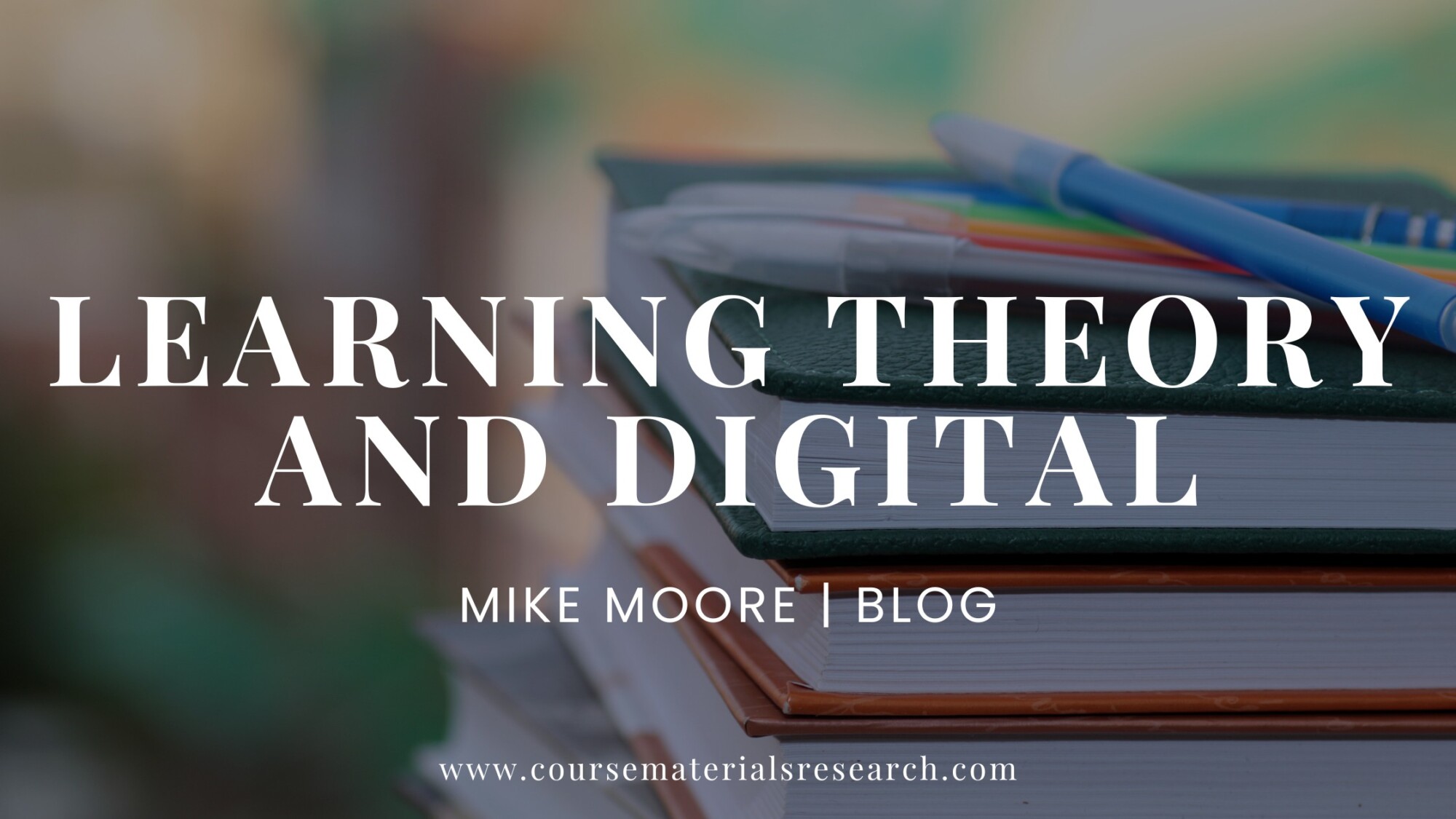Learning Theory and Digital

Does Learning Theory Support Digital in Higher Education?
John Dewey, an American educational theorist, advanced the learning-by-doing principle in the early 1900s. Dewey’s theoretical perspective has been furthered as the adoption and use of digital course materials and courseware has taken rise over the decade. Learning-by-doing has also become known as the “doer-effect”. The doer-effect or learning-by-doing suggests that learners can develop a deeper understanding of concepts and retain information more effectively when they actively engage in problem-solving, experimentation, and hands-on activities rather than passively consuming information – like the one-way push of information of print. The principles of these theories align with the adoption of digital course materials and courseware in higher education. Digital course materials and courseware offer opportunities for active learning and engagement. Here are five examples of how the doer-effect/learning-by-doing theories are supported by the adoption of digital course materials and courseware:
Interactivity
Digital course materials and courseware platforms use interactive elements like simulations, virtual labs, and a variety of media which allows students to actively engage with the material, apply their knowledge, and use hands-on experience to test their understanding. The interactive features promote these learning theories by enabling students to learn more effectively through direct involvement and experimentation.
Immediate Feedback
Courseware includes instructor assessments, self-assessment, and quizzes to provide immediate feedback to students. This helps students identify areas needed for improvement which helps them adjust their learning strategies either on their own or with their instructor. This real-time feedback allows students to learn from their mistakes, reinforces their understanding of the material, and apply their knowledge more effectively.
Personalization and Adaptivity
Digital courseware can be tailored to an individual student’s needs, preferences, and learning styles. Adaptive learning algorithms adjust the content and assessments based on the student’s performance. This ensures that students receive specific support/reinforcement in areas where they are struggling.
Collaboration and Peer Learning
Many digital course materials and courseware platforms include tools for collaboration and communication like discussion boards, chat, and collaborative functions. Features like this can foster peer learning and enable students to engage in collaborative problem-solving, group projects, and knowledge sharing.
Real-world Applications
Courseware can incorporate real-world examples, case studies, and scenarios. These experiences help students see and feel the practical applications of the concepts they are learning in the classroom. Connecting course and subject content to real-world situations, courseware encourages students to apply their knowledge and skills in relevant contexts.
Wrap Up
Since John Dewey popularized the learning-by-doing theory, modern researchers have morphed the theory into what is known as the doer-effect. I believe these theoretical lenses support the adoption of digital in higher education. Digital course materials and courseware emphasize the importance of active learning, engagement, and hands-on experiences in promoting student understanding and retention. Courseware platforms can effectively facilitate these experiences and contribute to improved learning outcomes for students. I have routinely been asked if access to course materials or course materials type is more important. Based on my work, I believe that access to course materials should be the top priority. However, the growing use of digital requires us to look beyond affordability and preference to how technology can help students learn, retain information, and ultimately be more successful in their academic pursuits.
As always, thanks for checking in and I’ll see you next time.
-MM

